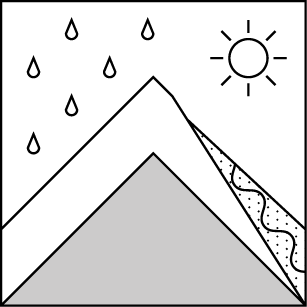Basic Information
Observation Details
Observation Date:
March 15, 2021Submitted:
March 16, 2021Observer:
SAC - VandenBos, VandenBos, GallZone or Region:
Galena Summit and Eastern MtnsLocation:
Butterfield (6,700-9,700', N-NE-E-SE-S-SW)Signs of Unstable Snow
Recent Avalanches?
None ObservedCracking?
None ExperiencedCollapsing?
None ExperiencedAdvanced Information
Weather Summary
Cloud Cover:
Mostly CloudyWind:
LightClear skies in the morning, with clouds beginning to build around noon. Skies were BKN, approaching OVC by mid-afternoon, then clearing a bit in the late afternoon. A few light squalls from convective showers produced no accumulation. Winds blew light from a variety of directions.
Avalanche Observations
No recent avalanches observed.
Snowpack Observations
Crusts on solar aspects broke down quickly at lower elevations, hung on a bit longer up above 8,000'. Surfaces were melted by mid-morning, but began to refreeze quickly as clouds covered the sun. By exit from the field (1600) these surficial crusts were 1-2cm thick. Mid-pack crusts on solars had accumulated a decent bit of melt-water from earlier freeze-thaw cycles, producing ice lenses up to 3-4mm thick. I dug at 8,600' on a SE aspect where HS=90cm. There was water present throughout the snowpack, particularly in the upper 30-40cm. Basal facets (12/11) were moist approaching wet. ECTs produced ECTXs and ECTNs in the upper 20s on mid-pack interfaces. At lower elevations, a weak freeze overnight, solar input, and ambient warm air had produced a snowpack that was trending towards being cohesionless, but I did not encounter this on slopes where it would be problematic.
Avalanche Problems
| Problem | Location | Distribution | Sensitivity | Size | Comments |
|---|---|---|---|---|---|
 Wet Loose
Wet Loose
|
|
Comments: Rose shaded based on where I encountered snow that may have been problematic in steeper terrain. Suspect a lot of the steeper terrain in these areas has already run through multiple wet loose cycles, limiting the likelihood of this problem. |
Terrain Use
Traveled in avalanche terrain up to 35 degrees.

